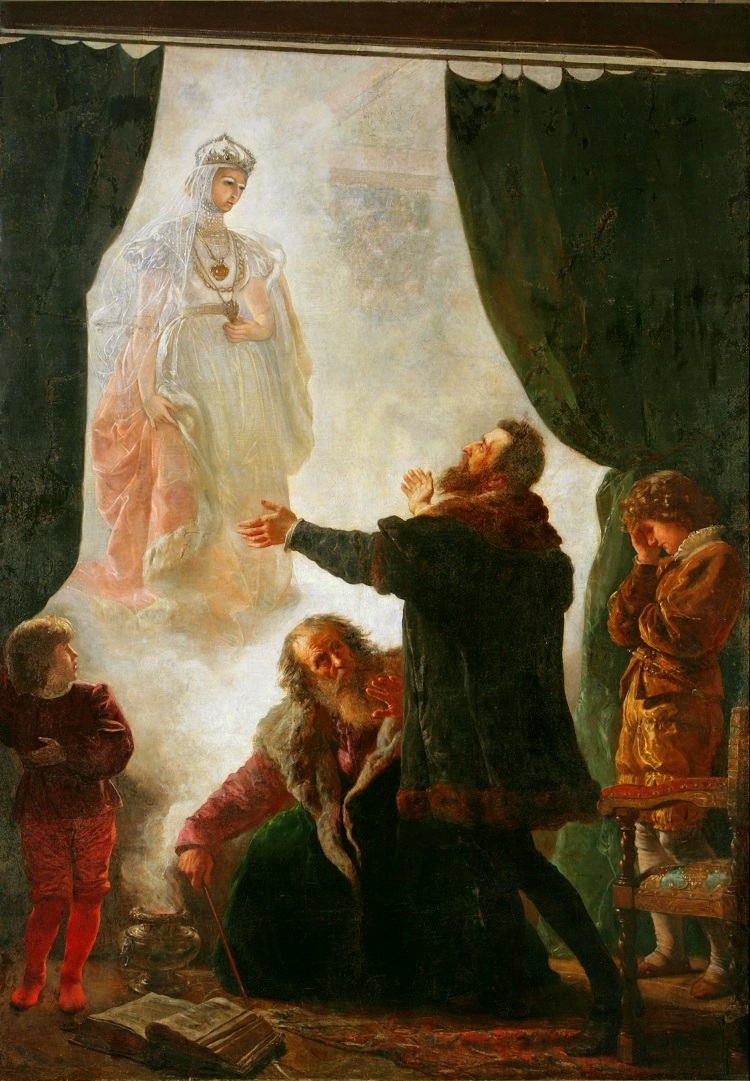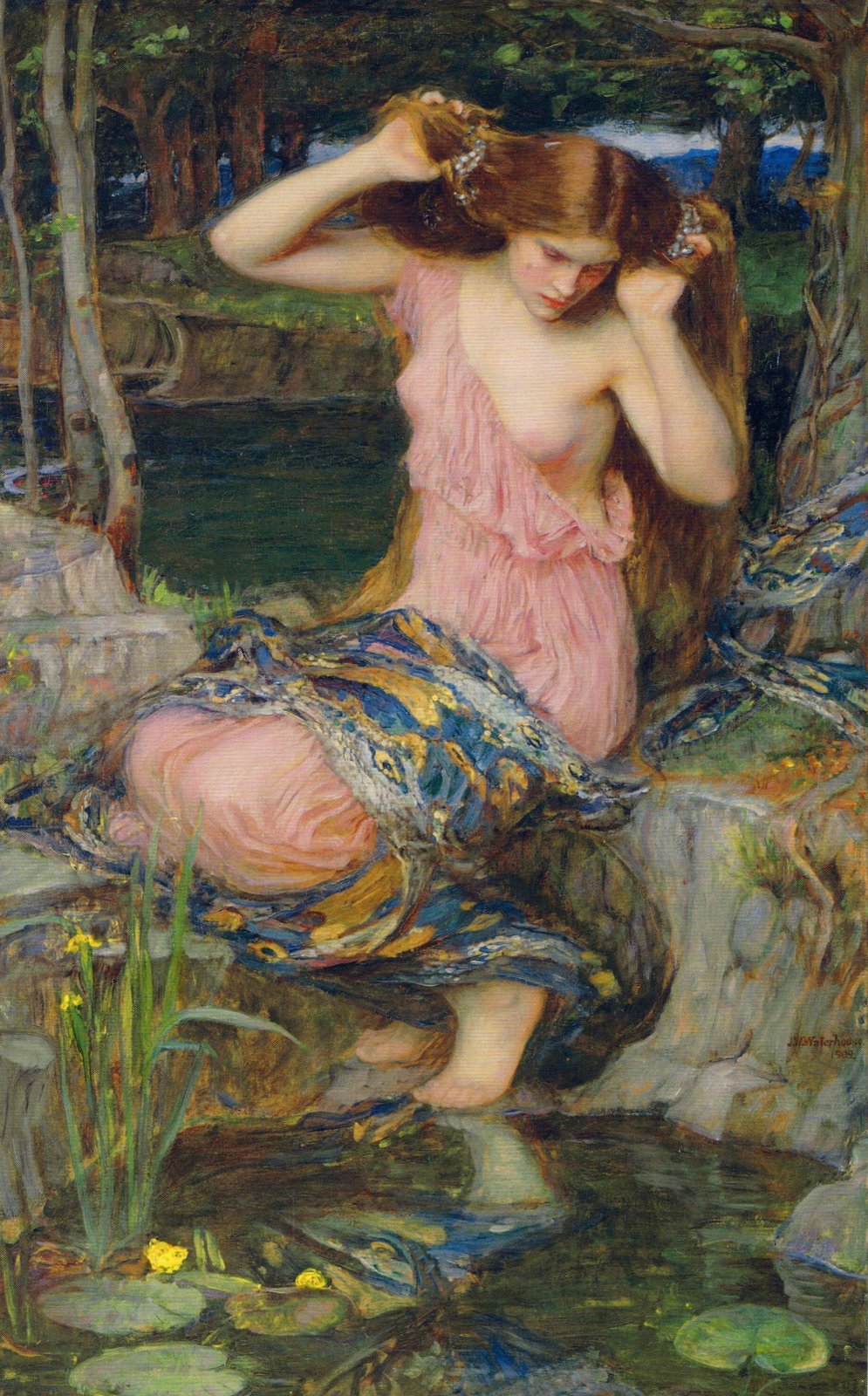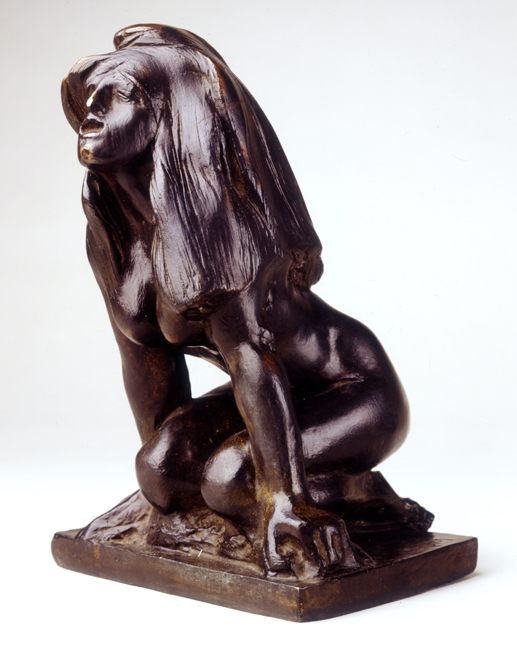|
La Sayona
{{One source, date=August 2014 La Sayona is a legend from Venezuela, represented by the vengeful spirit of a woman that shows up only to men that have love affairs out of their marriages. The name "Sayona" refers to the cloth the ghost wears which is a long white dress similar to a medieval undergarment. The legend claims that when this woman appears she asks for a ride, and after a while when the victim tries to see her face, he notices that she has instead a skull with horrible teeth.Domínguez, Luis Arturo. 1990. Encuentro con el folklore en Venezuela. Editorial Kapelusz Venezolana. Caracas. Legend The legend says that "La Sayona" was a young woman named Casilda. She lived in a small town in the plains of Venezuela and was the most beautiful girl there. She was married to a great man, caring and loving. Casilda and her husband had a baby boy. One day, Casilda was swimming naked in a nearby river and a villager saw her. After that, the man would always follow her and watch her ... [...More Info...] [...Related Items...] OR: [Wikipedia] [Google] [Baidu] |
Venezuela
Venezuela (; ), officially the Bolivarian Republic of Venezuela ( es, link=no, República Bolivariana de Venezuela), is a country on the northern coast of South America, consisting of a continental landmass and many islands and islets in the Caribbean Sea. It has a territorial extension of , and its population was estimated at 29 million in 2022. The capital and largest urban agglomeration is the city of Caracas. The continental territory is bordered on the north by the Caribbean Sea and the Atlantic Ocean, on the west by Colombia, Brazil on the south, Trinidad and Tobago to the north-east and on the east by Guyana. The Venezuelan government maintains a claim against Guyana to Guayana Esequiba. Venezuela is a federal presidential republic consisting of 23 states, the Capital District and federal dependencies covering Venezuela's offshore islands. Venezuela is among the most urbanized countries in Latin America; the vast majority of Venezuelans live in the cities of the n ... [...More Info...] [...Related Items...] OR: [Wikipedia] [Google] [Baidu] |
The Silbón
El Silbón (The Whistler) is a legendary figure in Colombia and Venezuela, associated especially with Los Llanos region, usually described as a lost soul. The legend arose in the middle of the 19th century. Legend Another more disturbing version states this son was a “spoiled brat” whose parents catered to every wish. One afternoon he demands his father hunt for a deer--his favorite meat. But when the father does not find a deer and returns empty-handed, his son kills him and cuts out his heart and liver. He then has his mother cook them for dinner. The mother finding this meat is tough starts to suspect something is amiss. She discovers these organs are her own husband’s innards and curses her son for eternity. Afterwards, his grandfather ordered the youth to be tied to a post in the middle of the countryside and lashed him until his back was destroyed. His wounds were then cleaned with alcohol, chili peppers, and lemon juice, a sack full of his father’s remains was pla ... [...More Info...] [...Related Items...] OR: [Wikipedia] [Google] [Baidu] |
Female Legendary Creatures
Female (symbol: ♀) is the sex of an organism that produces the large non-motile ova (egg cells), the type of gamete (sex cell) that fuses with the male gamete during sexual reproduction. A female has larger gametes than a male. Females and males are results of the anisogamous reproduction system, wherein gametes are of different sizes, unlike isogamy where they are the same size. The exact mechanism of female gamete evolution remains unknown. In species that have males and females, sex-determination may be based on either sex chromosomes, or environmental conditions. Most female mammals, including female humans, have two X chromosomes. Female characteristics vary between different species with some species having pronounced secondary female sex characteristics, such as the presence of pronounced mammary glands in mammals. In humans, the word ''female'' can also be used to refer to gender in the social sense of gender role or gender identity. Etymology and usage The ... [...More Info...] [...Related Items...] OR: [Wikipedia] [Google] [Baidu] |
Undead
The undead are beings in mythology, legend, or fiction that are deceased but behave as if alive. Most commonly the term refers to corporeal forms of formerly-alive humans, such as mummies, vampires, and zombies, who have been reanimated by supernatural means, technology, or disease. In some cases (for example in Dungeons & Dragons) the term also includes incorporeal forms of the dead, such as ghosts. The undead are featured in the belief systems of most cultures, and appear in many works of fantasy and horror fiction. The term is also occasionally used for real-life attempts to resurrect the dead with science and technology, from early experiments like Robert E. Cornish's to future sciences such as "chemical brain preservation" and "cryonics." History Bram Stoker considered using the title, ''The Un-Dead'', for his novel '' Dracula'' (1897), and use of the term in the novel is mostly responsible for the modern sense of the word. The word does appear in English before Stoker ... [...More Info...] [...Related Items...] OR: [Wikipedia] [Google] [Baidu] |
Venezuelan Legends
Venezuela (; ), officially the Bolivarian Republic of Venezuela ( es, link=no, República Bolivariana de Venezuela), is a country on the northern coast of South America, consisting of a continental landmass and many islands and islets in the Caribbean Sea. It has a territorial extension of , and its population was estimated at 29 million in 2022. The capital and largest urban agglomeration is the city of Caracas. The continental territory is bordered on the north by the Caribbean Sea and the Atlantic Ocean, on the west by Colombia, Brazil on the south, Trinidad and Tobago to the north-east and on the east by Guyana. The Venezuelan government maintains a claim against Guyana to Guayana Esequiba. Venezuela is a federal presidential republic consisting of 23 states, the Capital District and federal dependencies covering Venezuela's offshore islands. Venezuela is among the most urbanized countries in Latin America; the vast majority of Venezuelans live in the cities of the n ... [...More Info...] [...Related Items...] OR: [Wikipedia] [Google] [Baidu] |
Venezuelan Culture
The cultures of Venezuela are diverse and complex, influenced by the many different people who have made Venezuela their home. Venezuela has distinctive and original art, literature and music. People Venezuela's cultural heritage includes the original Venezuelan natives, the Spanish and Africans who arrived after the Spanish conquest, and the 19th century waves of immigration that brought many Italians, Portuguese, Arabs, Germans, Moroccan Jews, and others from the bordering countries of South America. About 93% of Venezuelans live in urban areas in the northern part of the country. Even though almost half of the land area is south of the Orinoco River, only 5% of the population lives in that area. More than 71% of the population call themselves Catholic and most of the rest are other Christians, mainly Protestant. Venezuela's heritage, art, and culture have been heavily influenced by its Caribbean context, including its historic architecture, art, landscape and boundaries. Ar ... [...More Info...] [...Related Items...] OR: [Wikipedia] [Google] [Baidu] |
Spanish-language South American Legendary Creatures
Spanish ( or , Castilian) is a Romance language of the Indo-European language family that evolved from colloquial Latin spoken on the Iberian peninsula. Today, it is a global language with more than 500 million native speakers, mainly in the Americas and Spain. Spanish is the official language of 20 countries. It is the world's second-most spoken native language after Mandarin Chinese; the world's fourth-most spoken language overall after English, Mandarin Chinese, and Hindustani (Hindi-Urdu); and the world's most widely spoken Romance language. The largest population of native speakers is in Mexico. Spanish is part of the Ibero-Romance group of languages, which evolved from several dialects of Vulgar Latin in Iberia after the collapse of the Western Roman Empire in the 5th century. The oldest Latin texts with traces of Spanish come from mid-northern Iberia in the 9th century, and the first systematic written use of the language happened in Toledo, a prominent city of the ... [...More Info...] [...Related Items...] OR: [Wikipedia] [Google] [Baidu] |
Xana
The xana is a character found in Asturian mythology. Always female, she is a creature of extraordinary beauty believed to live in fountains, rivers, waterfalls or forested regions with pure water. She is usually described as small or slender with long blonde or light brown hair (most often curly), which she tends to with gold or silver combs woven from sun or moonbeams. The origin of the Asturian word ''xana'' is unclear, though some scholars see it as a derivation from the Latin name for the goddess Diana. References to where the mythological xanas lived are still common in Asturian toponyms. They also appear in Eastern Galician and Cantabrian mythology (Anjanas). Characteristics The xanas promise treasures and can be disenchanted. Some xanas also attack people and steal their food. They live in fountains and caves. A xana can be a beneficial spirit, offering "love water" to travelers and rewards of gold or silver to those found worthy through some undefined judgment. The ... [...More Info...] [...Related Items...] OR: [Wikipedia] [Google] [Baidu] |
Tunda
The Tunda ( es, La Tunda) is a myth of the Pacific coastal region of Colombia and Ecuador, and particularly in the Afro-Colombian community of the Chocó department, about a shapeshifting entity, resembling a human female, that lures people into the forests and keeps them there. It is capable of changing its shape to appear in the form of a loved one, as in the likeness of a child's mother, to lure its victims into the forest and feed them with shrimps (''camarones peneídos'') to keep them docile. This is called ''entundamiento'' and a person in this state is ''entundado(a)''.González Cortés, Flover. 2001. ''Fantasmagorías. Mitos y leyendas del Pacífico colombiano'' Her shapeshifting abilities are said to be imperfect, as this ''doppelgänger'' of sorts would always have a wooden leg in the shape of a '' molinillo'', or wooden kitchen utensil used to stir hot drinks such as chocolate or ''aguapanela''. The monster, however, is very cunning when trying to hide this defect from ... [...More Info...] [...Related Items...] OR: [Wikipedia] [Google] [Baidu] |
Succubus
A succubus is a demon or supernatural entity in folklore, in female form, that appears in dreams to seduce men, usually through sexual activity. According to religious tradition, a succubus needs male semen to survive; repeated sexual activity with a succubus will result in a bond being formed between the succubus and the man; a succubus cannot drain or harm the man with whom she is having intercourse. In modern representations, a succubus is often depicted as a beautiful seductress or enchantress, rather than as demonic or frightening. The male counterpart to the succubus is the incubus. Etymology The term derives from Late Latin ''succuba'' "paramour" from ''succubare'' "to lie beneath" (''sub-'' "under" and ''cubare'' "to lie"), used to describe this female supernatural being's implied sexual position relative to the male sleeper's position. The English word "succubus" dates from the late 14th century. The succubus is also known as the earth wanderer, and she seeks her victi ... [...More Info...] [...Related Items...] OR: [Wikipedia] [Google] [Baidu] |
Vengeful Spirit
In mythology and folklore, a vengeful ghost or vengeful spirit is said to be the spirit of a dead person who returns from the afterlife to seek revenge for a cruel, unnatural or unjust death. In certain cultures where funeral and burial or cremation ceremonies are important, such vengeful spirits may also be considered as unhappy ghosts of individuals who have not been given a proper funeral. Cultural background The concept of a vengeful ghost seeking retribution for harm that it endured as a living person goes back to ancient times and is part of many cultures. According to such legends and beliefs, they roam the world of the living as restless spirits, seeking to have their grievances redressed, and may not be satisfied until they have succeeded in punishing either their murderers or their tormentors. In certain cultures vengeful ghosts are mostly female, said to be women that were unjustly treated during their lifetime. Such women or girls may have died in despair or the suf ... [...More Info...] [...Related Items...] OR: [Wikipedia] [Google] [Baidu] |
Siren (mythology)
In Greek mythology, the sirens (Ancient Greek: singular: ; plural: ) were humanlike beings with alluring voices; they appear in a scene in the Odyssey in which Odysseus saves his crew's lives. Roman poets placed them on some small islands called Sirenum scopuli. In some later, rationalized traditions, the literal geography of the "flowery" island of Anthemoessa, or Anthemusa, is fixed: sometimes on Cape Pelorum and at others in the islands known as the Sirenuse, near Paestum, or in Capreae. All such locations were surrounded by cliffs and rocks. Sirens continued to be used as a symbol for the dangerous temptation embodied by women regularly throughout Christian art of the medieval era. Nomenclature The etymology of the name is contested. Robert S. P. Beekes has suggested a Pre-Greek origin. Others connect the name to σειρά (''seirá'', "rope, cord") and εἴρω (''eírō'', "to tie, join, fasten"), resulting in the meaning "binder, entangler", i.e. one who binds ... [...More Info...] [...Related Items...] OR: [Wikipedia] [Google] [Baidu] |






